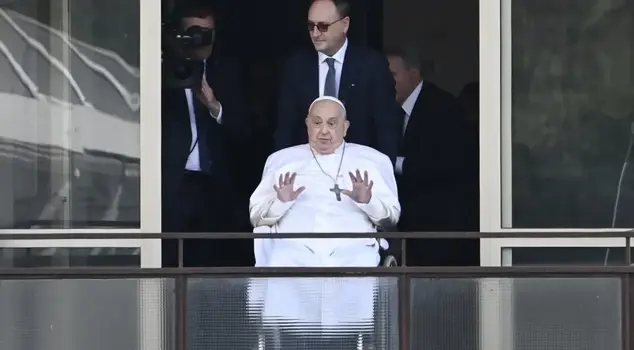
26.03.2025 09:21
It has been reported that Pope Francis, the head of the Vatican State, was hospitalized for 38 days due to a diagnosis of bilateral pneumonia and faced life-threatening situations twice during that time. The Pope's doctor stated, "That evening was very frightening. He knew, just like us, that he might not make it through that night. We could see that he was in pain."
The spiritual leader of Catholics and the President of the Vatican City, Pope Francis, was treated for bilateral pneumonia at the Gemelli Hospital in Rome from February 14 to March 23. The 88-year-old Pope's doctor, Prof. Sergio Alfieri, spoke to the Italian newspaper Corriere della Sera and explained that the Pope had come back from death twice.
"FOR THE FIRST TIME, I SAW TEARS IN SOME PEOPLE'S EYES"
Alfieri noted that the most difficult and distressing moment during the Pope's 38 days in the hospital was the evening of February 28, stating, "It was bad. He had been in the hospital for 14 days, and his condition suddenly worsened; he was experiencing bronchospasm and was asking for help. This was the worst. For the first time, I saw tears in some people's eyes around him. We all realized that the situation was getting worse and that we had a risk of not succeeding."
"THE POPE SAID 'TRY EVERYTHING, DON'T GIVE UP'"
Alfieri expressed that in such a situation, they had the options of either "ending the treatment and allowing him to go" or "continuing treatment using all possible medications and therapies, risking damage to other organs." He explained that the final decision was made by the Pope himself, and they opted to increase the treatment. Alfieri said, "The decision is always up to the Pope. He said, 'Try everything, don't give up.' We thought the same, and no one gave up."
"WE COULD SEE HE WAS IN PAIN"
Alfieri pointed out that the Pope was fully conscious even when his condition worsened, stating, "That evening was terrifying. Like us, he knew he might not survive that night. We could see he was in pain. From the first day, he asked us to tell him the truth, whatever it was."
"THE SECOND CRITICAL MOMENT"
Recalling that the Pope had faced life-threatening situations twice during this process, Alfieri said, "We were going through a tough period, and at that time, the Pope was eating and faced the risk of choking on his vomit. It was the second critical moment because in such situations, if timely intervention is not made, you face the risk of sudden death in addition to existing complications in the already vulnerable lungs."
Alfieri reported that they told the Pope he would need a two-month recovery period after being discharged. He noted, "Of course, there are some rules you need to follow at this stage, such as avoiding contact with large groups or children that could carry new infections. We talked as he was leaving, and he promised us that he would not let our efforts go to waste, but he is the Pope; we cannot dictate to him."
Meanwhile, Pope Francis, who returned to his residence in the Vatican on March 23, sent a message to those attending the general assembly of the Pontifical Commission for the Protection of Minors, which will take place from today until Friday, stating that the Church should "offer hospitality and care" to the victims of abuse.
WHAT HAPPENED?
Pope Francis had stated that he suffered from bronchitis and had difficulty breathing during two public events on February 9 and 12, and he had asked his aides to read the speeches for him.
On February 14, it was reported that the Pope was hospitalized due to a polymicrobial infection in his respiratory tract.
The Vatican announced on February 18 that the Pope had developed bilateral pneumonia and that his clinical condition was complex.
On February 28, the Vatican reported that the Pope had undergone bronchoaspiration due to a bronchospasm crisis, mechanical ventilation had been initiated, and he had responded positively to treatment.
The spiritual leader of Catholics experienced acute respiratory failure twice on March 3, and non-invasive mechanical ventilation was restarted.
Starting from March 4, the Pope began to show signs of slight improvement, and it was reported that the last chest X-ray taken on March 12 confirmed the improvements recorded in the previous days radiologically.
On March 22, Prof. Sergio Alfieri stated that the Pope would need to rest for two months from then on, saying, "The Pope will be discharged from the hospital tomorrow. He has been stable for two weeks."